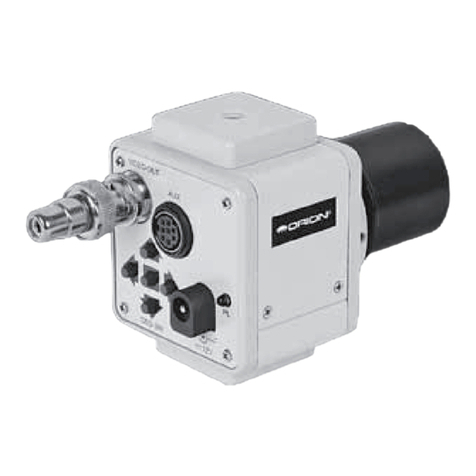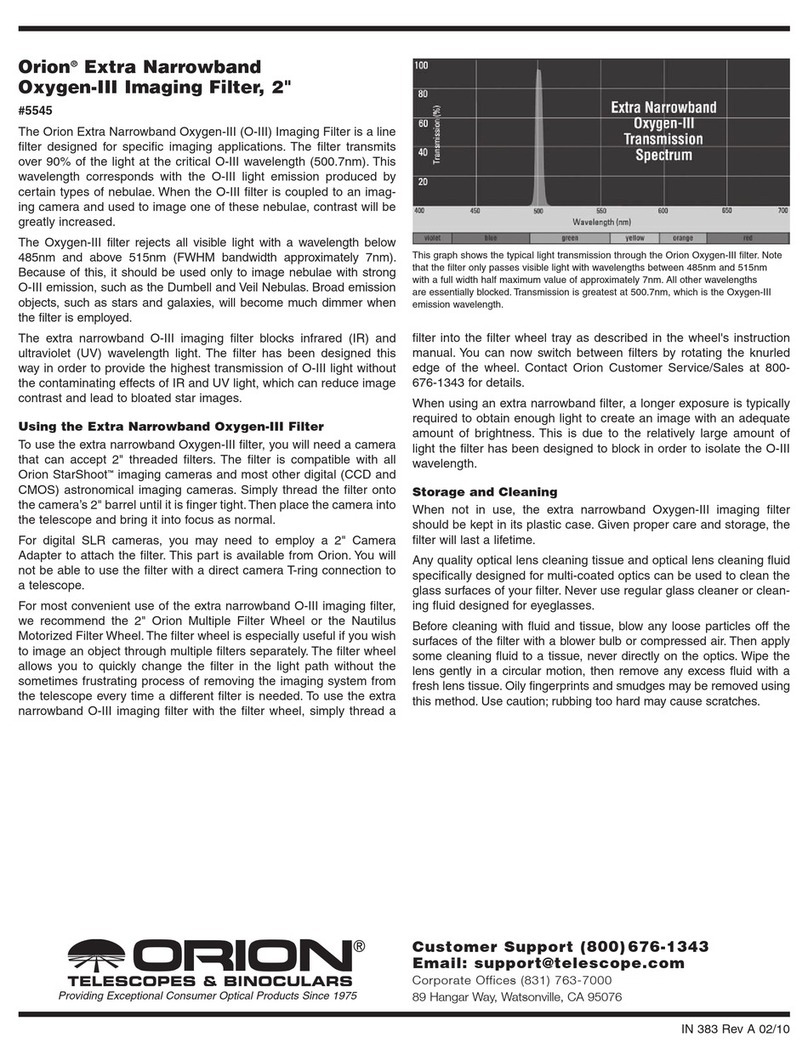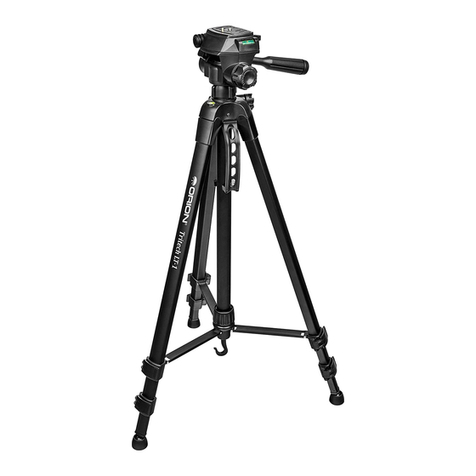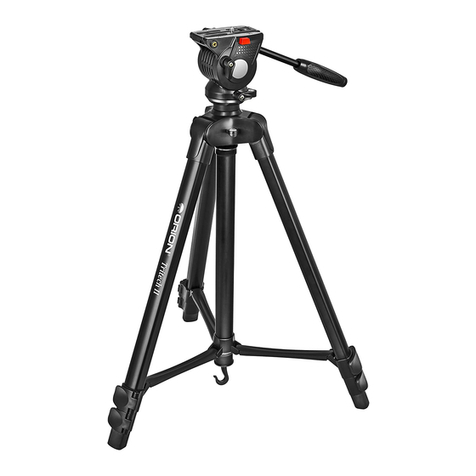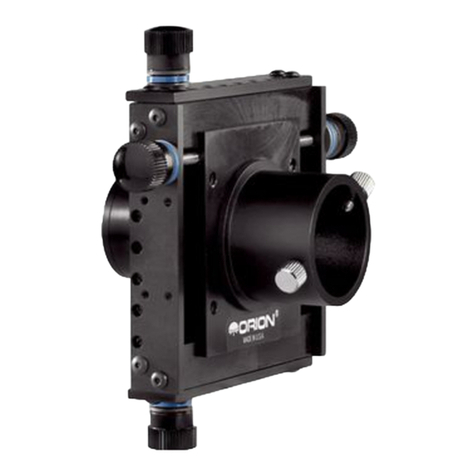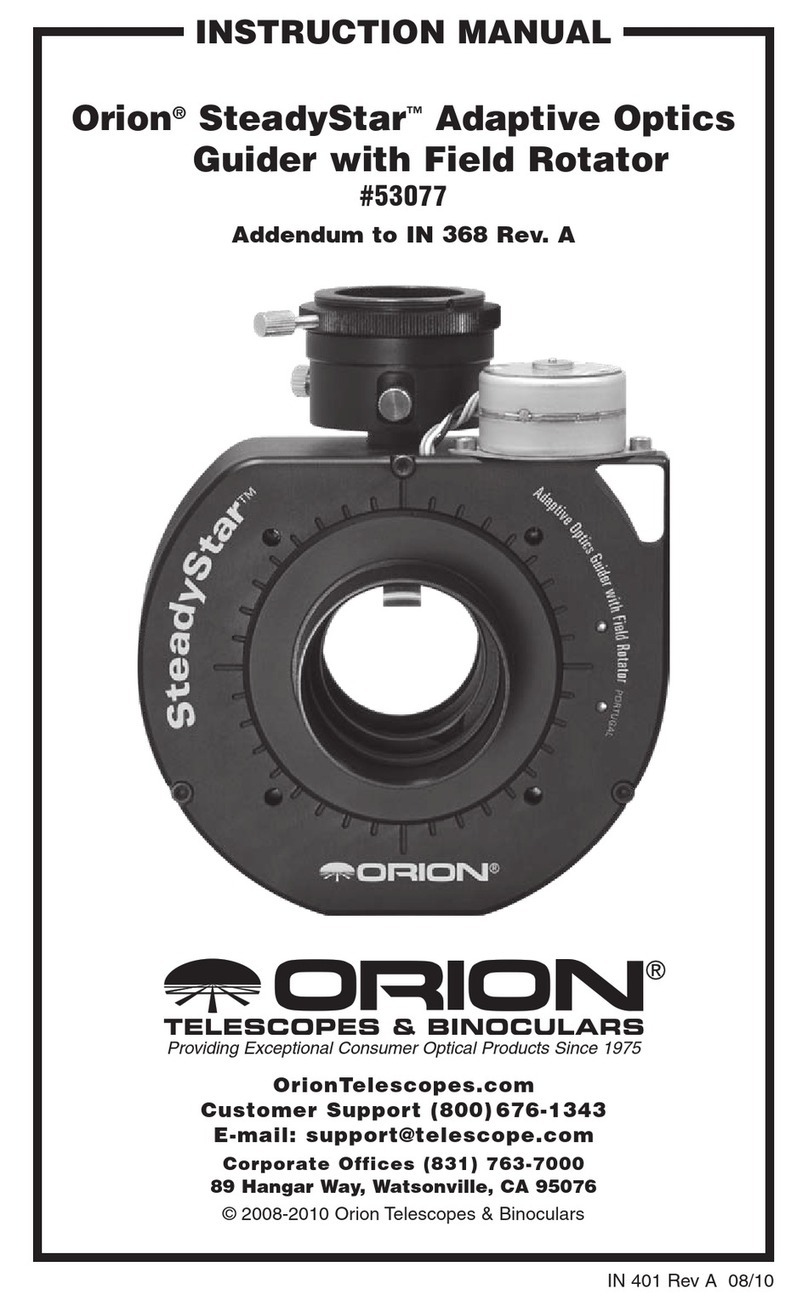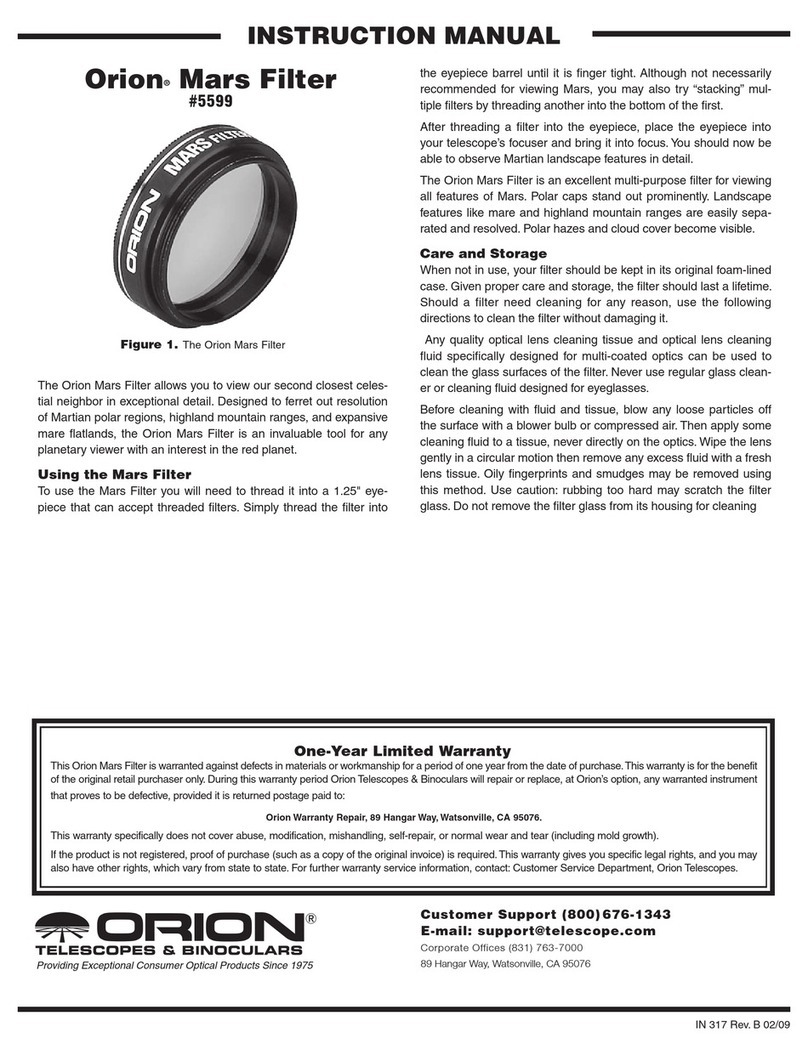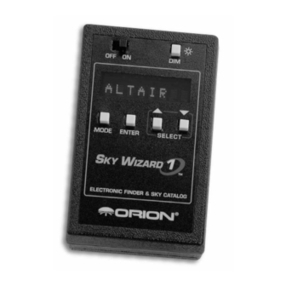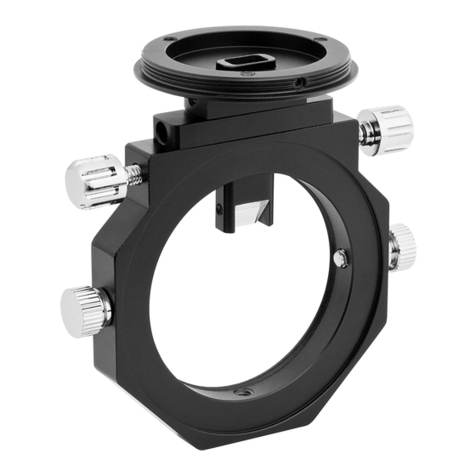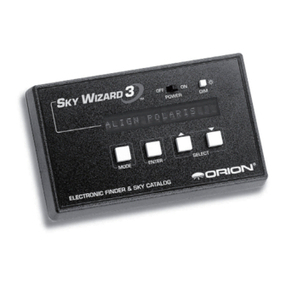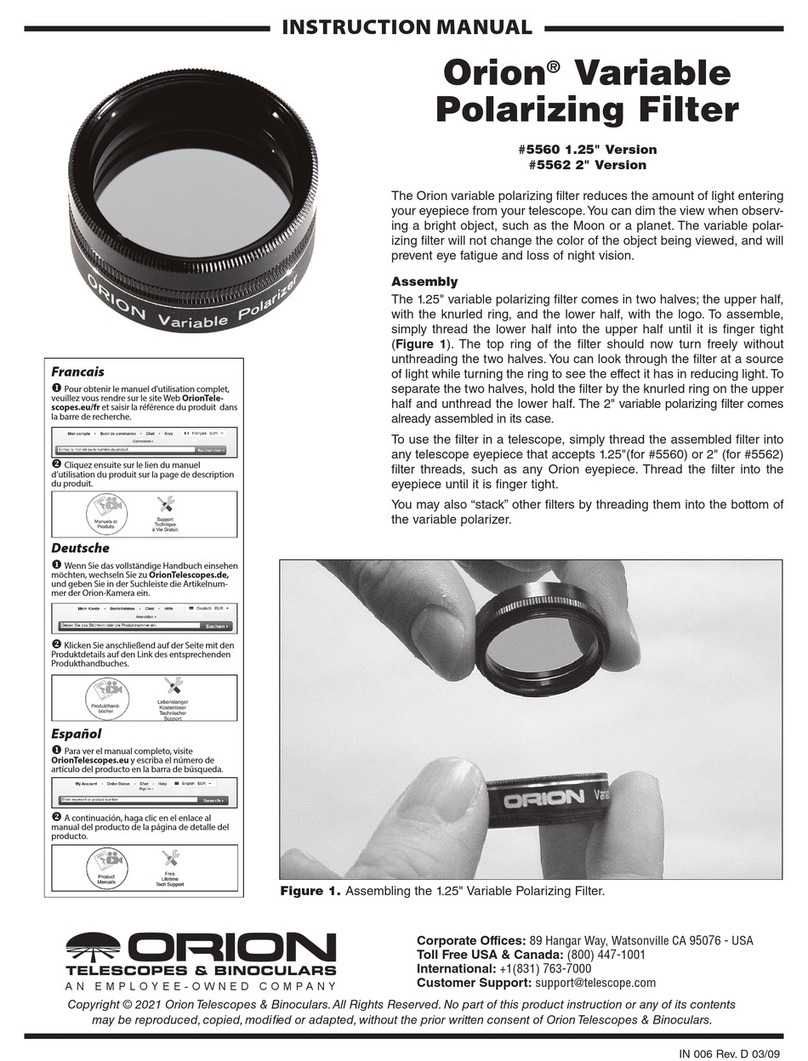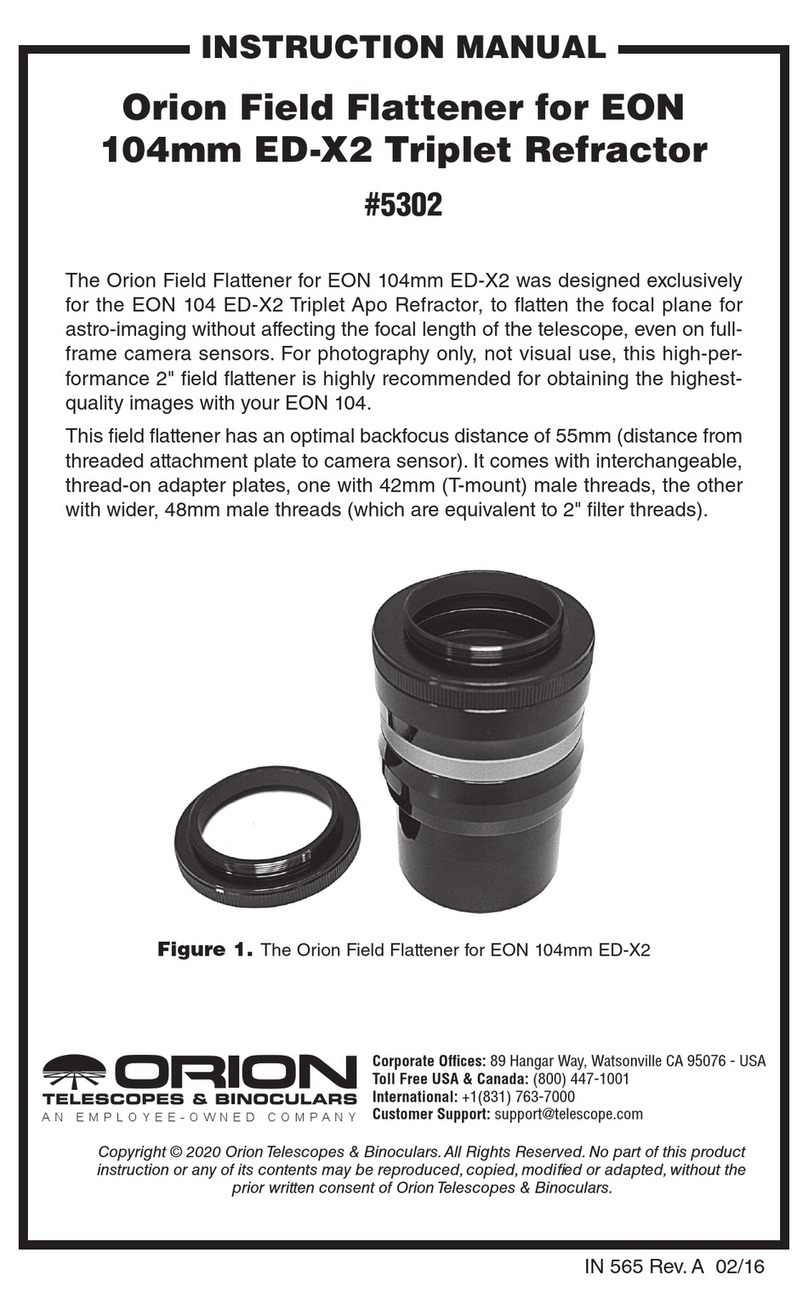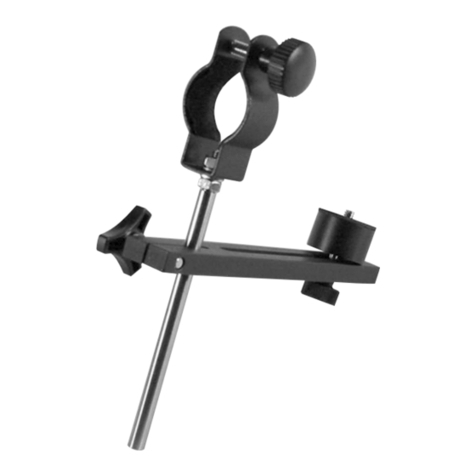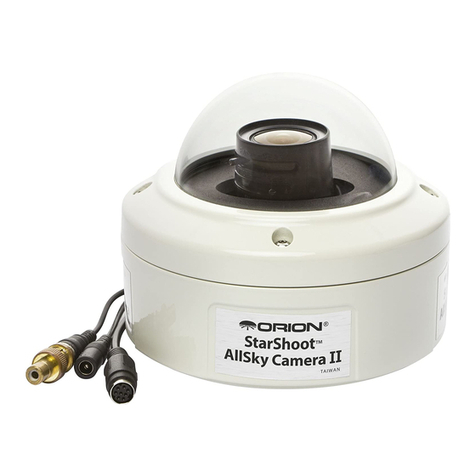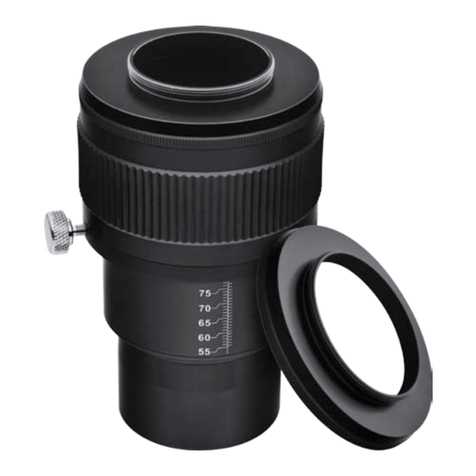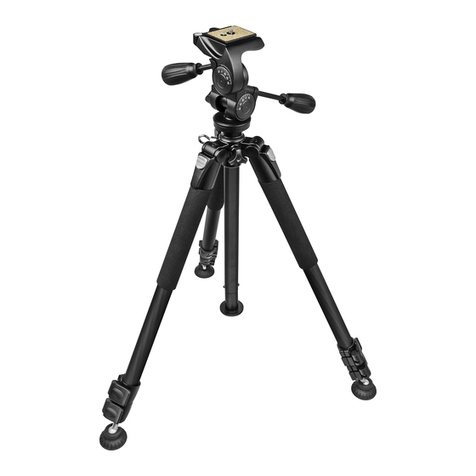
4
with the SteadyPix Deluxe, camera, and eyepiece assembly
you have prepared in advance.
You may nd it handy to use the camera’s timer to take your
picture, as this will result in minimal disturbances to the cam-
era or telescope when snapping the photo. The movement of
pressing the shutter button may be enough motion to affect
image quality, or even lose the picture.
5. What to Photograph with
the SteadyPix Deluxe
Now that you have assembled the SteadyPix Deluxe, the only
question remaining is “What do I want to photograph?” We
have a few suggestions for you:
Terrestrial Photography
With literally millions of objects to photograph on earth, there
are only a few hints we can give for using the SteadyPix
Deluxe for terrestrial photography. One is to consider using
a telescope with an Alt/Az (short for altitude/azimuth) mount
on a sturdy tripod. An Alt/Az mount will allow simple up/down,
left/right motions of the telescope so that you can easily adjust
and aim the camera. Equatorial mounts (mounts designed to
track the movement of stars in the sky) are not recommended,
as they will be needlessly heavy due to the counterweight,
and their ability to track celestial objects is of no use when
photographing an object like a bird’s nest. In fact it will likely
get in the way. Dobsonian mounts will also have trouble with
terrestrial photography since aiming a Dobsonian mounted
telescope at something close to the horizon (where most ter-
restrial photography takes place) will mean it has to be very
low to the ground and hard to use.
Remember that objects viewed through certain types of tele-
scopes can be oriented backwards, upside-down, or both.
The Moon
The Moon is one of the easiest and most interesting targets to
photograph. With its rocky, cratered surface there is a wealth
of detail to be photographed with your camera and SteadyPix
Deluxe. The Moon is a very large target, so at higher magni-
cations you will only get a part of the surface in each pic-
ture. Use eyepieces that provide low powers (50x and below
should work with most telescopes) if you wish to have the
entire surface of the Moon in your eld of view.
Photographing the full moon can be difficult since sunlight is
falling directly on lunar surface and will mean there are very
few shadows, so details will be harder to see. Photographing
the Moon when it is in one of its partial phases is preferable,
when the angle of the sun provides many detailed shadows
on its surface. You might also want to use an optional Moon
lter that threads onto the bottom of the eyepiece to bring out
more subtle features on the lunar surface, even during a full
moon.
The Bright Planets
Next to the Sun and the Moon, the planets Mars, Venus,
Jupiter and Saturn are the brightest objects in the sky and
make excellent targets for photography. Keep in mind that the
planets don’t stay still like the stars, so to nd them you should
refer to Sky Calendar at our website (OrionTelescopes.com),
or to charts published monthly in Astronomy, Sky & Telescope,
or other astronomy magazines.
To get the right amount of detail on the planets, eyepieces
that give high powers (at least 75x or more) should be used
when using the SteadyPix Deluxe. Low powers will make it
easier to nd the planets, but they will not bring out any signi-
cant details on the planets to make them worth photograph-
ing. High powers must be used to get images of the famous
details of the planets, such as the rings of Saturn or bands on
Jupiter’s surface.
You might also consider using colored planetary lters that
thread onto the bottom of the eyepiece (just like the Moon
lter). These colored lters bring out subtle details of the plan-
ets by ltering out various colors that reduce detail. Orion has
several sets of colored lters available. Visit our website, tele-
scope.com, for more information on colored planetary lters
Deep-Sky Objects
Since deep-sky objects are very faint, use only digital camer-
as to photograph them when using the SteadyPix Deluxe. Film
cameras require too much exposure time to get good results.
A few bright objects can be photographed effectively using
your SteadyPix Deluxe (such as the Orion Nebula). Other
deep-sky objects may also be photographed for interesting
pictures. Try experimenting with different deep-sky objects to
see what kind of results you can obtain.
Corporate Offices: 89 Hangar Way, Watsonville CA 95076 - USA
Toll Free USA & Canada: (800) 447-1001
International: +1(831) 763-7000
Copyright © 2021 Orion Telescopes & Binoculars.All Rights Reserved. No part of this product instruction or any of its contents
may be reproduced, copied, modied or adapted, without the prior written consent of Orion Telescopes & Binoculars.
AN EMPLOYEE-OWNED COMPANY
One-Year Limited Warranty
This Orion product is warranted against defects in materials or work-
manship for a period of one year from the date of purchase. This
warranty is for the benet of the original retail purchaser only. During
this warranty period Orion Telescopes & Binoculars will repair or
replace, at Orion’s option, any warranted instrument that proves to
be defective, provided it is returned postage paid. Proof of purchase
(such as a copy of the original receipt) is required. This warranty is
only valid in the country of purchase.
This warranty does not apply if, in Orion’s judgment, the instrument
has been abused, mishandled, or modied, nor does it apply to nor-
mal wear and tear. This warranty gives you specic legal rights. It is
not intended to remove or restrict your other legal rights under appli-
cable local consumer law; your state or national statutory consumer
rights governing the sale of consumer goods remain fully applicable.
For further warranty information, please visit www.OrionTelescopes.
com/warranty.
